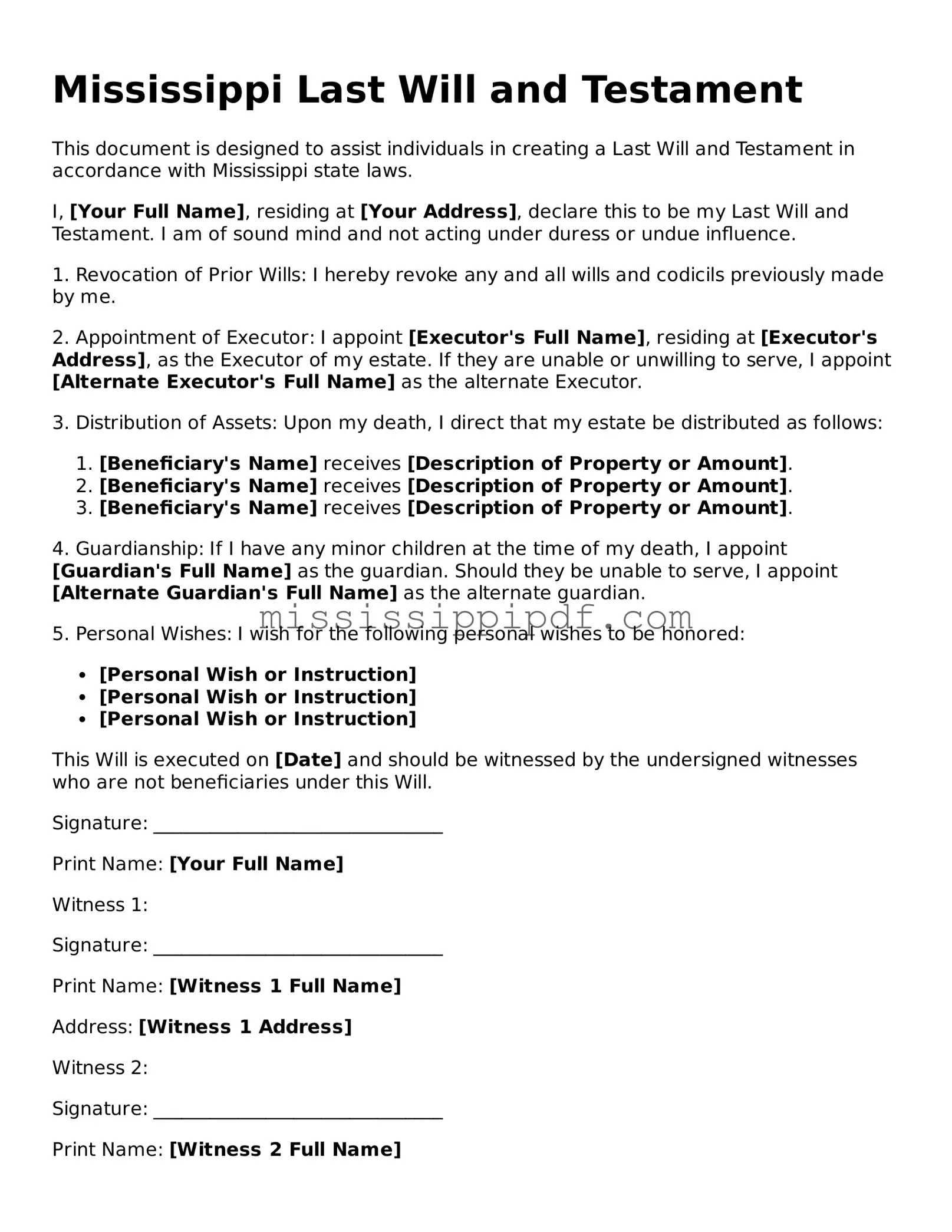The Mississippi Last Will and Testament form shares similarities with the Living Will, which outlines an individual's preferences for medical treatment in the event they become incapacitated. Both documents serve to express a person's wishes, but while a Last Will addresses the distribution of assets after death, a Living Will focuses on healthcare decisions during life. Each document requires clear communication of intentions to ensure that the individual's desires are honored, either in the management of their estate or their medical care.
Another document similar to the Last Will is the Durable Power of Attorney. This legal tool allows an individual to designate someone to make financial or medical decisions on their behalf if they become unable to do so. Like a Last Will, it is essential for ensuring that one’s wishes are respected. However, the Durable Power of Attorney takes effect during the individual’s lifetime, while a Last Will only comes into play after death. Both documents emphasize the importance of planning for the future and protecting one's interests.
The Revocable Living Trust is another document that parallels the Last Will and Testament. A Living Trust allows individuals to place their assets into a trust during their lifetime, which can then be managed by a trustee. Upon the individual's death, the assets in the trust are distributed according to the terms set forth in the trust document, bypassing the probate process. This can make the transfer of assets smoother and faster than through a Last Will, which must go through probate. Both documents aim to ensure that an individual's wishes regarding asset distribution are followed.
In understanding the various legal documents associated with healthcare and estate planning, it is important to familiarize oneself with resources such as the Arizona PDFs, which provide templates and guidelines for important forms like the Medical Power of Attorney. This document allows individuals to appoint someone to make healthcare decisions on their behalf, ensuring that their wishes are honored in times of incapacity. By utilizing available resources, individuals can better prepare for the future and ensure their healthcare preferences are met.
Similarly, a Healthcare Power of Attorney allows a person to appoint someone to make medical decisions on their behalf if they are unable to do so. This document is akin to a Living Will, but it provides broader authority by allowing the designated person to make decisions not just about end-of-life care, but also about other medical treatments. Both documents emphasize the importance of having a trusted person make decisions in line with one’s values and preferences.
The Codicil is another document related to the Last Will and Testament. A Codicil serves as an amendment to an existing will, allowing individuals to make changes without drafting an entirely new will. This can include updates to beneficiaries, changes in asset distribution, or alterations in executor appointments. Like the Last Will, a Codicil must be executed with the same formalities to ensure it is legally valid. This document allows for flexibility in estate planning while maintaining the original intent of the will.
Additionally, the Affidavit of Heirship is a document that can be used in conjunction with a Last Will. It serves to establish the identity of heirs when a person dies without a will or when the will is contested. This affidavit is often used in situations where probate is not necessary, and it helps clarify who is entitled to the deceased's assets. Both documents aim to facilitate the transfer of property, though the Affidavit of Heirship addresses situations where a will may not exist or be recognized.
Finally, the Letter of Instruction is a document that complements a Last Will and Testament by providing additional guidance to loved ones regarding personal wishes, funeral arrangements, and asset distribution. While not legally binding, it serves as a helpful resource for the executor and family members to understand the deceased’s preferences. Both documents aim to ease the burden on family members during a difficult time, ensuring that the individual’s wishes are clear and respected.
